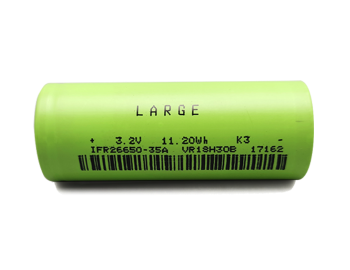How Many Max Capacity for a Lithium Battery can Make?

Lithium Battery Capacity:
Lithium battery capacity refers to the amount of electricity that a lithium battery can store and is one of the important performance indicators to measure the performance of a lithium battery. It indicates the discharge capacity of the lithium battery under certain conditions (discharge rate, temperature, termination voltage, etc.) (JS-150D can be used for discharge test).
Factors affecting lithium battery capacity
Battery capacity = energy density × battery volume
With the same volume, the capacity of the lithium battery is determined by the energy density, and the energy density of the lithium battery is mainly determined by the cathode material.
Energy Density
Energy density refers to the amount of energy stored in a certain space or mass substance. The energy density of a battery is the electrical energy released by the average unit volume or mass of the battery.
Battery weight energy density=battery capacity×discharge platform/weight, unit is Wh/kg, (watt-hour/kg)
Battery volume energy density = battery capacity × discharge platform/volume, the unit is Wh/L (watt-hour/liter)
The greater the energy density of the battery, the more electricity stored per unit volume or weight.
Cathode material
The cathode material is currently the sole or main provider of lithium ions in lithium batteries. It is also a bottleneck in improving the energy density of lithium ion batteries. Due to the relatively high requirements for cathode materials for lithium-ion batteries, there are few types of materials that can be found (or expected) as cathode materials for lithium-ion batteries compared to anode materials. In next article will compare the pros and cos of different cathode materials
The Max Capacity of Single Battery
18650 Li-ion Battery

Due to the fixed size of the 18650 lithium battery, its maximum capacity has always been the focus of many practitioners. In recent years, various manufacturers have improved their technology, and the capacity has also increased accordingly. Samsung, Panasonic, LG, Sony, Toshiba can achieve more than 3600mAh However, the consistency of stability is not good, and mass production trends cannot be formed yet.
At present, the relatively mature 18650 lithium battery on the market, which has a capacity between 2200-3500mAh. The 18650 lithium battery in this range has the best stability and consistency.
26650 Li-ion Battery

Mainly focus on two materials difference:
Lithium iron phosphate: IFR26650 lithium battery has 3000mAh, 3200mAh, 3300mAh, 3500mAh, 3800mAh and other capacity sections, the nominal voltage is 3.2V. At present, the largest 26650 lithium battery in mass production on the market is 3.2V 3500mAh.
Ternary (nickel, cobalt, and manganese): The capacity of ternary INR26650 lithium batteries on the market is generally 5000mAh, 5500mAh, and 6000mAh.
Conclusion: Although the current capacity improvement of lithium batteries is restricted by cathode materials, the research of cathode materials and the improvement of energy density are far from being over.

